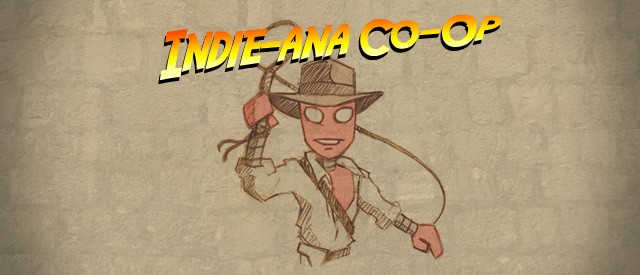This week in Indie-Ana Co-Op we speak with Terry Welsh, the one man development team at Really Slick. His first game release, Retrobooster, is set to launch next year and is reminiscent of Asteroids and the classic cave shooters of old. We spoke with Terry about his upcoming game and his journey from NASA employee to indie game dev.
Co-Optimus: Tell us a little about yourself and your background. How did you end up going from a job working out space shuttle launches and rover landings to independent games developer?
Terry Welsh: My family had an Atari 800 and an Atari ST when I was a kid, so I played plenty of classic games. I also made lots of ultra-violent claymation movies, gaining a life-long love of anything animated. My professional background is in visual simulation and virtual reality (think flight simulators, head trackers, and giant terrain databases), which require programming skills almost identical to those of game development.
Retrobooster was a hobby project for years, and it was torturous working on it so slowly. Fed up with spinning my wheels and emboldened by enough positive feedback from testers, I did the only sane thing and made Retrobooster my full-time job. Making a successful indie game is a long shot, so I'm gambling that I'll still be employable in some high tech corporate job if things don't work out.
Co-Optimus: So then what inspired you to become a games developer and embark on this path?
Terry: There isn't just one thing. Games and computer animation have excited me my whole life. The main thing usually missing from the vis-sim world is creativity, so I have always found artistic outlets outside of work, such as painting or making screensavers. Computer games are just a natural fit for my computer skills and artistic nature.
I looked into jobs at game studios a couple times over the years, but the work situation usually looked bleak for various reasons (pigeonholing, insane crunch time, etc.), and other graphics programming jobs paid more. Being an indie developer just suits me better. I can set my own schedule and I get to work on every little detail of the game from designing levels to optimizing the physics. The risk, of course, is that there is much less chance of success making Retrobooster than working at an established studio.
Co-Optimus: Did you have any previous experience with games development? Any little demos or mods you worked on/created?
Terry: Almost none. However, all the graphics and vis-sim programming I have done require many of the same skills needed for making games. Game design is very new to me.
This is a mod I made for Doom II in 1995. Wow, I didn't think I could actually find that WAD file. The Internet remembers everything.
Co-Optimus: It's too bad those mods can't get ported to the Xbox! Tell us about your upcoming game, Retrobooster. What’s it about? What are some of its features?
Terry: Retrobooster is an old school survival shooter and cave-flyer. The idea was to build a game with classic thrust ship controls, realistic physics, obstacle navigation, and levels with lots of deadly, creepy, and disgusting enemies. I also wanted to make the game like a toy you can pick up and play with. To that end, once a level is unlocked you can go back and play it anytime you want, possibly to work on a new high score.
Most cave-flyers focus mainly on the shooting. I always thought really good thrust ship controls had a bit of poetry to them. I wanted a thrust ship so nimble that it could dance through crushing machinery and bullet hell scenarios and power slide through high-speed time challenges. This focus on ship controls solidifies it as a skill-based game, and I try to pace the levels so that players can keep improving at flying the ship while encountering these different types of challenges.
Some games in this genre try to neuter the physics to make their controls easier. They use a lot of drag or make it so thrusting forward reduces your sideways velocity. This is fine if you want to remove the skill component. Retrobooster, on the other hand, tries to be old school and skill-based. Inertia is always a factor and your ship will do exactly what you command it to do because it obeys realistic physics. A lot of testers have found this very refreshing.
